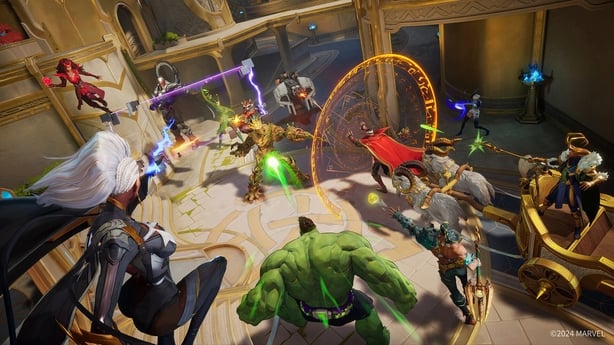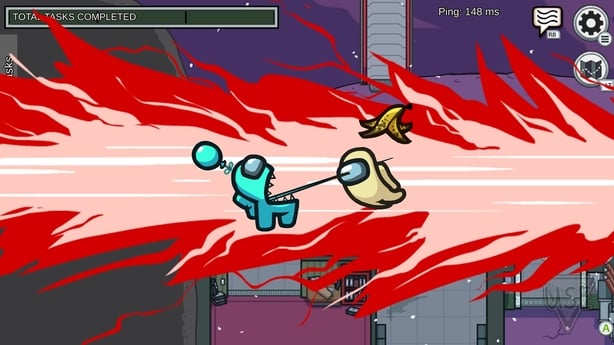Parents, when it comes to gaming, I do not envy you.
It seems that just when you finally get to grips with the likes of Fortnite and Among Us, a new title pops up that moves the goalposts.
Before long, you're back at square one, figuring out just what a game is about, how it plays, who you can play online with, and ultimately, whether it's safe for the young gamers in your home.
As fast-paced as the gaming industry has become, there are a few simple ways parents can skip the tutorial and learn what they need to know about suitability. With the right information, resources, and parental settings, you'll find you aren't as powerless as you might think.
Age ratings - what age is Fortnite actually meant for?
Like film and music, video games receive an age rating to inform consumers whether or not they are suitable. In Ireland, we follow the Pan-European Game Information (PEGI) age rating system, which splits games into different age categories and highlights the content you're likely to encounter.
It's important to note that age ratings focus on a game's suitability, not difficulty. This means that while a game may not have anything offensive (and score a low age rating), it could still prove challenging (and unplayable) for younger players.
With that said, let's look at what age ratings mean with examples.

PEGI 3 has the lowest age rating, and it includes the likes of EA Sports FC 25, Disney Dreamlight Valley, and Rocket League. You won't find foul language or nasty surprises with these games. If there is an element of violence, it is mild, comical, and very cartoonish. Often, what you see is what you get.
The next rating is PEGI 7, where games begin to have more 'frightening' content or implied violence. This category can feature some wildly popular family games, like Astro Bot, Crash Bandicoot N. Sane Trilogy, and Among Us. While many of us would think of them as harmless fun, it's worth noting that there is a potential that the 'mild violence' featured may frighten younger players.

Astro Bot is deemed unsuitable for players under 7
PEGI 12 is probably the most interesting rating for many parents, as this category includes many heavy hitters sweeping classrooms and living rooms around the country. We're talking Fortnite Battle Royale, Marvel Rivals, League of Legends, and many other free-to-play online multiplayer games.
Yes, you read that clear and simple – according to PEGI, if you're under 12, games like Fortnite Battle Royale aren't suitable to play. Simple as.
Why? Although the games in this bracket often have non-realistic violence, they can feature other elements, like sexual innuendo and mild bad language.

Many are live-service games, meaning they receive continuous updates with both official and user-generated content. As such, the user experience can and will change over time. For this reason, many games come with an additional label, 'Parental Guidance Recommended.'
The last two age ratings are clearer-cut, and the warnings associated with them should be no surprise. PEGI 16 is used to rate games with realistic depictions of violence or sexual activity, more extreme foul language, and potential use of alcohol, drugs, and tobacco. Examples include the Tomb Raider Remastered series, Avowed, and Split Fiction.

feature in-game purchases has come under scrutiny
PEGI 18 is the highest rating, where games can demonstrate gross levels of violence, and content like drugs and gambling can be featured and glamourised. Examples include The Last of Us, Call of Duty, Resident Evil Village, and Grand Theft Auto V.
If you're struggling to figure out why a game has been rated a certain way, parents can check information using the PEGI search finder. You can also search for age ratings and get recommendations for suitable games to buy.

involving cartoon-like characters
Content descriptors can provide important context
Age ratings are just one part of game suitability. Content descriptors are thelittle icons placed beside age ratings, which flag specific content consumers should know about.
Many are self-explanatory, like 'Violence,' 'Bad Language,' 'Fear,' and 'Gambling.' However, one particular content descriptor is proving to be quite controversial, especially when it comes to young gamers, 'In-game purchases.'
In December 2024, the indie developer behind the award-winning deck-building game Balatro tweeted his frustrations about the PEGI rating system. The game, which initially had a PEGI 3 rating, was updated to 18 as it was found to contain 'prominent gambling imagery and material that instructs about gambling.'
Since PEGI gave us an 18+ rating for having evil playing cards maybe I should add microtransactions/loot boxes/real gambling to lower that rating to 3+ like EA sports FC
— localthunk (@LocalThunk) December 15, 2024
The tweet quickly went viral, thanks to the massive fandom Balatro has generated but also because the double standards many found were at play. The developer drew comparisons to EA Sports FC 25, which features controversial loot-box mechanics that many say promote gambling, yet it still enjoys a PEGI 3 rating.
After the uproar of Balatro's age rating, the developer successfully appealed the rating, with PEGI noting in a statement, 'The Complaints Board concluded that, although the game explains the various hands of poker, the roguelike deck-building game contained mitigating fantastical elements that warranted a PEGI 12 rating.'
The statement also added that 'the PEGI system continuously evolves in line with cultural expectations and the guidance of independent experts who support our assessment process.'
While many rejoiced that Balatro was given a reprieve, there are still calls for the likes of in-app purchases, which have become increasingly common in all genres of games, to carry more weight in age suitability.
Other resources to empower parents
While PEGI has a library of game information, they aren't the only resource you can draw upon. The Entertainment Software Rating Board (the system used in the USA, Canada, and Mexico) is a fantastic resource for parents. While the age brackets differ, the website has insightful parent blogs exploring popular games in great detail.
Parental controls are also another effective way to manage gaming's suitability. Don't worry - even if you are allergic to technology, you can set up concrete settings by following the simple guidance of publishers and developers.
Below are links to the leading platforms your family is most likely using. Each page has tutorials and resources to put age restrictions on playtime, manage screen time, set spending limits, and control whether an account can chat or message other users.
- PlayStation Parental Controls
- Nintendo Switch Parental Controls
- Steam Family User Guide (PC)
Finally, why not find out for yourself?
A survey from the ESRB released in 2024 found that for parents, actually playing the games ranked the best method for deciding whether a game was appropriate or not. Yes, you read that correctly – maybe it's time to take up the controller, download Fortnite, and see for yourself what the fuss is all about.
My eldest: can I download Fortnite?
— Stacey Solomon (@StaceySolomon) May 1, 2018
Me: No.
My eldest: All my friends have it & play & im the ONLY one who can't play.
Me: let me play it and see.
*zach goes to bed*
I’m now 2 hours in, dressed as some kind of Raven, on my way to Tilted Towers with 3 people I don’t know 🤷♀️😂
The good news is that many games offer free demos and trials to allow you to try them out. Popular multiplayers, which, let's face it, are probably the biggest concern right now, are often free-to-play. This means the only thing you'll be out of for peace of mind, is a half hour or so of your time. And who knows – you might even enjoy the research!

